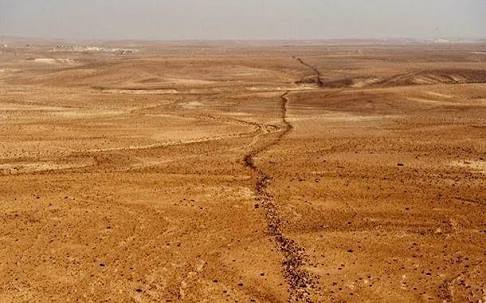Petra, the ancient Nabatean capital located in Jordan, is one of many unsolved mysteries in the world. Dating back to 300 B.C., this renowned archaeological site continues to fascinate researchers and visitors alike.
Archaeologists used aerial photography to map out a 150-km-long, wide, and high ruined wall in the deserted valley of Jordan, known as the "Khatt Shebib."

The Khatt Shebib stone-wall's design suggests it may not have been built for defense. The wall was first reported in 1948, but despite many efforts, archaeologists are still unsure of its purpose, construction date, and builders.
The Khatt Shebib wall runs from north-northeast to south-southwest and has sections where two walls run parallel to each other, as well as sections where the wall branches off.
The wall is now in ruins, but at its time, it stood about 3.3 feet high and 1.6 feet wide, suggesting it may not have been built for defensive purposes against invading armies.
However, the Khatt Shebib wall may have been built to keep out less dangerous animals such as goats or other small creatures.
The Aerial Archaeology in Jordan project suggests that ancient agriculture west of the Khatt Shebib wall suggests the structure may have served as a boundary separating farmlands and nomadic farmers' pastures.
The Khatt Shebib is a valuable historical attraction for those interested in archaeology, and should be included on any tour of Jordan for those who enjoy visiting such sites.



